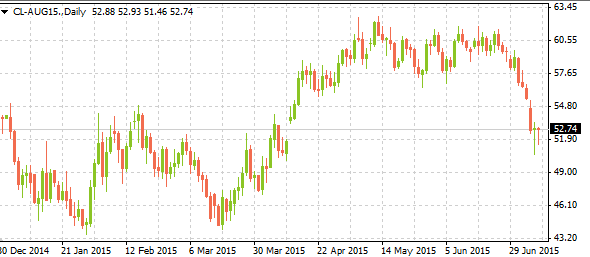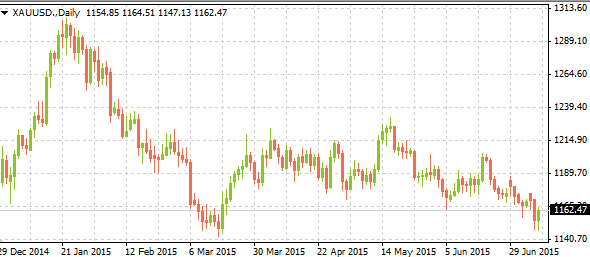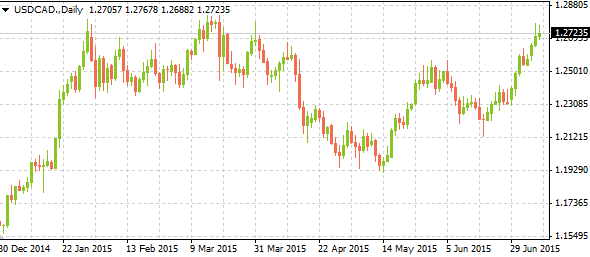This strategy works until it doesn’t. If anything, a dip buyer should reorient to start fading strength, or selling rallies, in an effort to capitalize on the renewed risk aversion capturing the attention of market participants. The risk factors contributing to the current volatility have been on the horizon for months on end but have been largely ignored thanks to the continued efforts of Central Banks to be buyers of last resort. Complacency has been steadily growing with market integrity continuing to break down as evidenced by the more frequent crashes in financial instruments. Most of the smart money has already moved out of risk-assets as the last remaining buyers are mainly retail investors. The overarching principle is that making 2%-3% off a bounce is not worth a potential 15-20% loss. Buying the dip is only going to provide investors limited upside in the near-term accompanied by the rising probability of catastrophic loss.
What started out as a political crisis in Greece has rapidly transformed into an economic crisis that threatens to shake the foundations of the Euro while showering financial assets in renewed volatility. The crisis is not just a localized occurrence as China also nears the brink of its own perilous economic outlook. The global economy is in jeopardy of a sharp correction after years of stimulus at the zero bound failed to bolster growth. While China and Greece’s problems are not necessary emblematic of all the ills facing global economic fundamentals, they share a striking resemblance to the ideas of overleveraging and chasing good money after bad. This has been a mainstay of ZIRP and NIRP because oftentimes these extremely accommodative monetary policies lead to bad decision-making when it comes to investing. The incentive to hunt for high yields ends up trumping demand for quality, low-yielding assets.
With leverage at or near record highs, the possibility of margin call induced market slides are increasingly likely. Take for example the recent equity rout in China. The dramatic swings in financial markets are causing a wave of margin calls owing to the margin debt traders have employed to capitalize on the rapid rise of Chinese equity valuations. Already, the panic has set in for many of the newly minted Chinese retail trading herd. Just like typical herd mentality, when sentiment turns, it is hard to reverse. The sentiment across markets is similarly turning from a perma-bullish outlook back toward more realistic expectations and slightly bearish. Were it not or the massive interventions of global central banks, the losses would be exacerbated by the shifting emotional tides. Central banks are meanwhile finding themselves in a challenging position as tools to fight future crises are limited considering the sustained zero-bound policies. Being the bidder of last resort might not be enough to prevent another round of turmoil.

Similar to nature, the greater the efforts piled into controlling chaos, the more likely the descent into entropy. Policymakers are starting to recognize this theme as continued interventions reduce market liquidity and hurt the price discovery process. Besides contributing to market volatility, it also destroys the credibility of efficient markets. However, the most harmful element is the deleveraging process it beckons, akin to what was witnessed during the Lehman Brothers crash. Unwinds are particularly painful as evidenced by the downturn witnessed in 2008-2009. Right now, we are witnessing the beginning of another deleveraging moment, with commodities and stocks bearing the brunt of the process. Reflecting a weakening economic outlook, commodities have much further to fall as the velocity of global trade flows slows. China is the epicenter of the weakness after multiple stimulus efforts contributed to overinvestment in key industries coupled with overbuilding in infrastructure. With return on investment falling, investors have retrenched from their earlier optimism, exacerbating the crisis and fomenting further risk-aversion.

With these perils taken into consideration, the time to shift from yield to quality has never been more apparent. However, traditional risk-aversion avenues have changed. For instance, owing to the weak inflation outlook in the United States, the US dollar continues to benefit from safety flows while gold prices are still falling despite the flight to safety. The Franc has managed to amaze investors after the Swiss National bank took interest rates firmly into negative territory to ward off speculative inflows. However, it is still bid despite the foreign exchange interventions of the Swiss National Bank. The yen however has lost some of its safety appeal like gold as the appreciation in the dollar trumps other haven moves. Like the title suggests, this time is different and dip buyers should beware. The risks clearly outweigh the reward. It’s important to remember that trying to catch the falling knife could see the whole hand bloodied.
